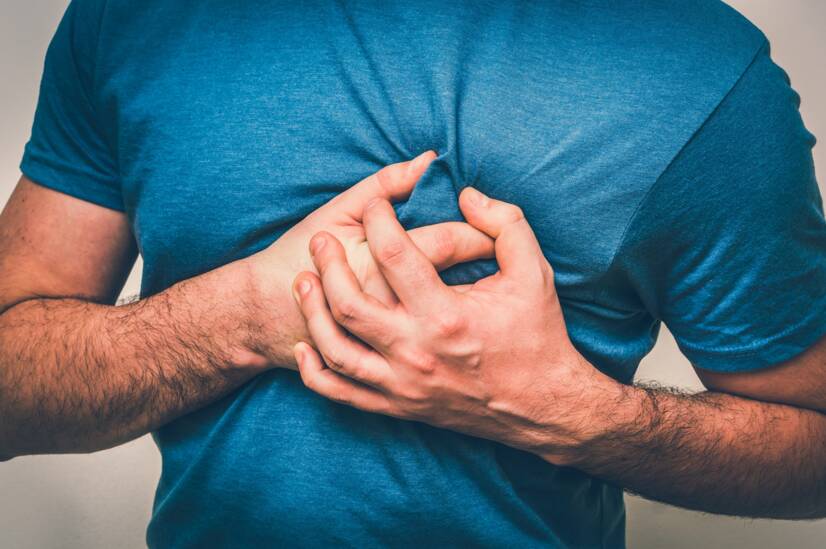- wikiskripta.eu - Chest topography
- rarediseases.org - Titze syndrome
- mayoclinic.org - Costochondritis
- webmd.com - Tietze Syndrome: What to Know
Tietz syndrome: what is it and what are its symptoms and causes?

Tietz's syndrome is a rare condition. It presents with chest pain at the top of the ribs. It affects people under the age of 40 and its cause is unknown.
Most common symptoms
- Shoulder Blade Pain
- Sweating
- Abdominal Pain
- Painful Breathing
- Spirituality
- Pain that Radiates into the Shoulder
- Nausea
- Head spinning
- Bone Pain
- Muscle stiffness
- The Island
- Back Pain
- Reddened skin
- Accelerated heart rate
Characteristics
Tietz syndrome is a set of symptoms related to irritation of the sternum and ribs (costae). It is technically called sternocostal irritation. The main symptom of Tietz syndrome is chest pain.
The cause of the inflammation of the rib cartilage is often unknown. In this disease, pain is felt in the area of the sternum and the first four ribs. The pain occurs specifically at the point where the sternum joins the ribs.
Interesting:
This syndrome is named after the German physician Alexander Tietz, who first described it in 1909.
Tietz syndrome is characterized by moderate to severe localized pain and tenderness. The second and third ribs are most commonly affected.
What is chest and ribs?
The shape of the adult chest is flattened, arched and symmetrical in front. The base of the chest (thorax) is the bony rib cage. The chest is bounded cranially (towards the head) by the neck and caudally (towards the legs) by the abdomen.
The thorax consists of:
- 12 pairs of ribs
- the sternum
- 12 thoracic vertebrae
Superficially, the thorax is delimited from the abdomen by a line running from the sword-shaped process (processus xiphoideus sterni) through the caudal margins of the ribs laterally and posteriorly to the plane of the spinous process of Th12.
The ribs (costae) and intercostal muscles form the base of the chest wall.
The intercostal spaces are defined by the ribs and the intercostal muscles. They run obliquely from the upper rib down to the lower rib. They are located in the bony parts of the ribs in the region of the rib cartilages.
Causes
The exact cause of Tietz syndrome is not entirely clear. It is probably a multifactorial disease. Some researchers believe that microtrauma to the anterior chest wall may be the cause of the syndrome. Sometimes chronic, excessive coughing, vomiting or chest bumps may precede the development of the disorder. Viral or bacterial infections or surgery in the chest area may be the cause.

The most common factors include:
- Physical activity - excessive manual exertion, heavy lifting, excessive sports activity and severe coughing
- Post-traumatic conditions - for example, after a car accident, fall and other possible chest injuries
- Infections - a rare condition in drug addiction or after chest surgery
- Mental - most commonly related to excessive physical activity
Symptoms
Inflammation can cause mild swelling in the chest area. This area is warmer than the rest of the body and may be red.
A significant symptom is pain, which:
- spreads to the abdomen, arms, neck and head
- is more pronounced on the sides of the sternum (where the ribs join)
- worsens with deeper breathing and coughing
- is most common on the left side
Therefore...
It is very important to rule out possible heart problems (myocardial infarction), which Tietz syndrome resembles.
Table with symptoms of myocardial infarction and Tietz syndrome
| Tietz syndrome | Myocardial infarction |
|
|
Interesting information can also be found in the article:
Myocardial infarction: why does it happen, what are the symptoms of acute heart attack?
Diagnostics
The diagnosis of Tietz syndrome should be made by the exclusion method. It is important to exclude serious causes such as myocardial infarction or pulmonary embolism.
- Medical history - The doctor interviews the patient to find out the current and previous diseases and determine the subjective feelings.
- Examination by sight and palpation - To determine any swelling and redness of the chest. He will also determine the extent of mobility on movement.
- Laboratory examination - Cardiac enzymes (CKMB), thrombotic markers (D-dimers) to rule out cardiac cause, C-reactive protein, Fareus Westergren (FW) for inflammatory parameters to determine the extent of inflammation caused by Tietz syndrome.
- Imaging methods - Depending on the patient's condition, X-ray, magnetic resonance imaging (MRI), computed tomography (CT).
Course
The course of the disease has no clear rules and is different for everyone.
In many cases, the pain persists for weeks, even months. In others, the course is acute. Suddenly, they begin to feel pain in the chest area, which worsens with movement or breathing.
But...
Either way, chest pain should never be underestimated. For a correct diagnosis, a doctor should be sought.
How it is treated: Tietz syndrome
Treatment of Tietz Syndrome: Drugs and Rehabilitation
Show moreTietz syndrome is treated by
Tietz syndrome is examined by
Interesting resources










